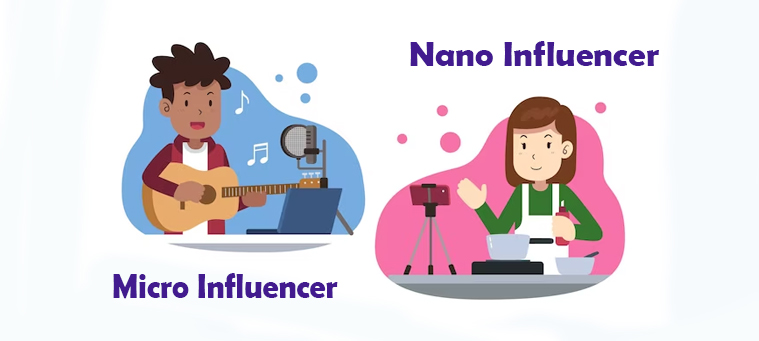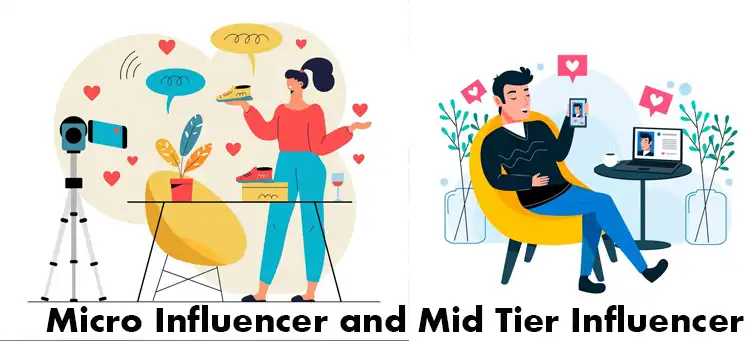In the world of digital marketing, influencer tiers categorize influencers based on their number of followers and typical engagement levels. Brands leverage influencers as part of their marketing strategy to increase brand awareness, engage target audiences, and ultimately drive conversions and sales. Identifying the right tier of influencer is key to running an effective and ROI-positive influencer campaign.
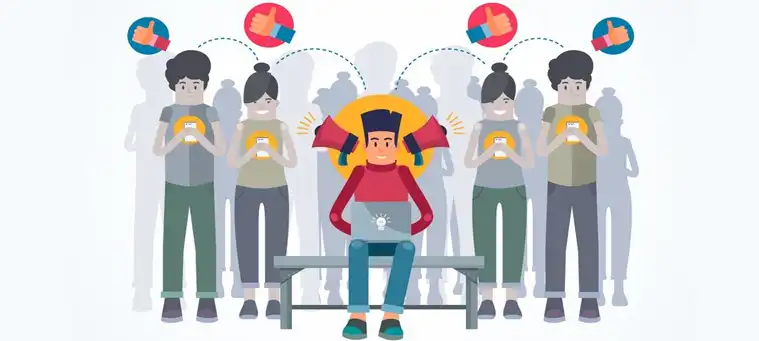
What Defines an Influencer Tier?
Influencers are broadly categorized into tiers based on their number of followers. There are five major types of influencers. They are:
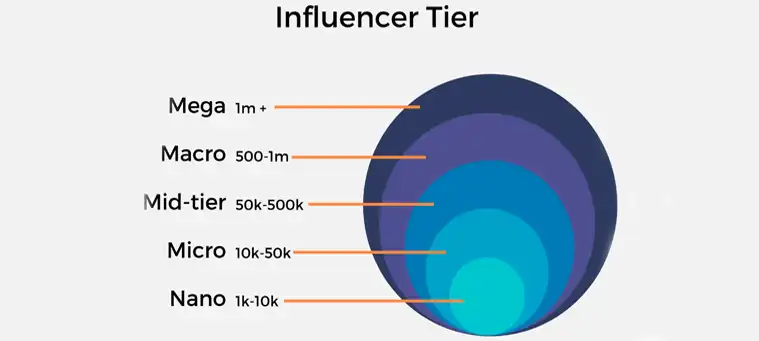
- Nano-scale Influencers: 1,000 – 10,000 followers
- Micro Influencers: 10,000 – 50,000 followers
- Mid-Level Influencers: 50,000 – 500,000 followers
- Macro Influencers: 500,000 – 1 million followers
- Mega Influencers: 1 million+ followers
While follower count offers a baseline for tiering, engagement rates also distinguish influencer tiers. Mega- and macro-influencers have mass reach. However, reach or followers alone doesn’t guarantee influencer marketing success. It’s important to know when to use one and which one for that matter.
Nano-influencers: When You Want to Test Things Out
Nano-influencers with 1,000-10,000 followers are a cost-effective way for startups and small brands to target very specific niche audiences. Their hyper-focused content and small following allows them to build a trusted relationship with their engaged community.
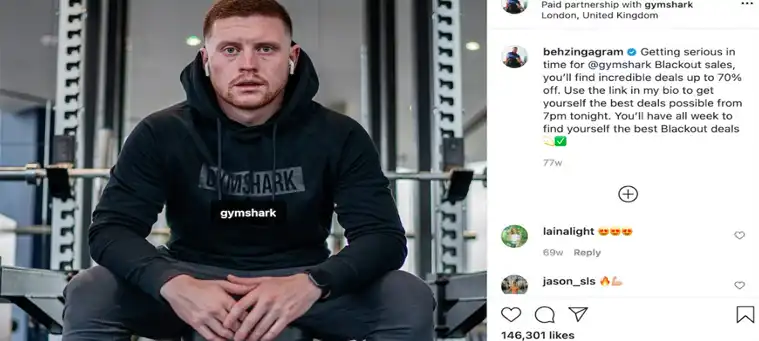
A nano-influencer collaboration helped Gymshark generate over 15,000 likes and comments for just $300 total spend.
Nano-influencers are ideal for product seeding, early feedback, and driving awareness in micro-communities.
Micro-influencers: When You Want to Target that Niche Audience
Micro-influencers with 10,000-50,000 followers deliver strong engagement and conversion rates by catering content precisely to their audience’s interests.
A Nielsen study found micro-influencers have 22.2x more conversations in their niche compared to an average social media user.

Home goods company Wayfair saw micro-influencers drive 11x more conversions compared to affiliate partners.
The meaningful connections micro-influencers have with followers make their content feel authentic and drive product discovery.
Mid-tier Influencers: Wider Yet Cost-Effective Reach
Mid-tier influencers with 50,000-500,000 followers balance meaningful engagement with an expansive audience reach. Software company HubSpot spent $25,000 to reach 1 million impressions by activating mid-tier influencers, a much more affordable CPM compared to other channels. Mid-tier influencers help raise brand awareness and consideration for new products through reviews and recommendations to their engaged following.

Consumer tech company Anker saw a $7 return for every $1 spent when leveraging mid-tier influencers.
Their broad reach combined with niche authority makes this tier ideal for amplifying branded content.
Macro-Influencers: Marketing With Volume
Macro-influencers with 500,000-1 million followers are industry leaders who drive mass awareness of products and campaigns. Their extensive follower count and expert knowledge strengthens brand positioning and increases purchase intent.
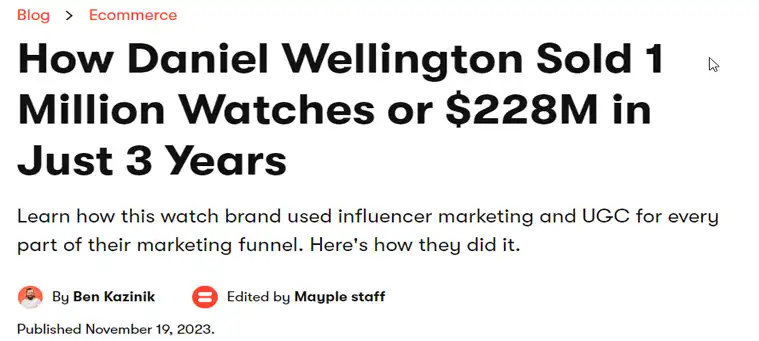
Daniel Wellington leverages mid-tier influencers between 50k-500k followers as brand ambassadors. Reported $200+ million in revenue from influencer collaborations.
For product launches or campaigns that require widespread visibility fast, macro-influencers are the right fit.
Mega-Influencers: Expensive But Can be Worth It
Mega-influencers like celebrities with over 1 million followers deliver instant international recognition for brands. But their A-list status comes at a premium, with fees over $100,000 per post. Mega-influencer collaborations generate rapid spikes in sales and visibility.
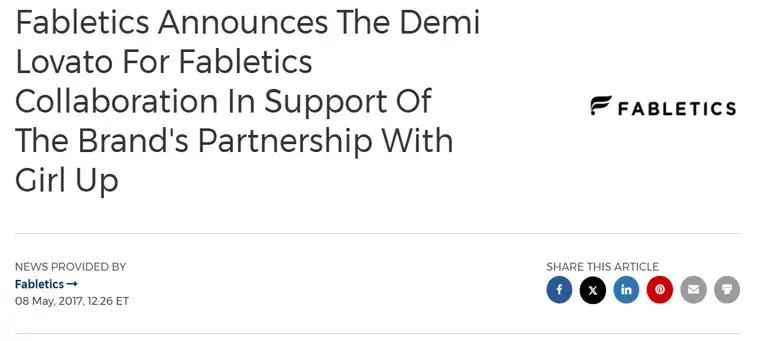
Demi Lovato helped increase revenue by 40% for fitness company Fabletics.
Mega-influencer endorsements are strategic brand plays reserved for amplifying major product launches or redefining brand image.
How to Choose the Right Tier for Your Brand
Identifying the optimal influencer tier for your brand comes down to your campaign goals, budget, and target demographic. Mega- and macro-influencers excel when the goal is widespread brand awareness. Their expansive reach gets brands and products lots of visibility. Micro- and nano-influencers thrive when a niche audience and high engagement are priorities.
The key is optimizing for audience quality over just high follower numbers. A micro-influencer in your industry with 10k very engaged followers often outpaces a celebrity influencer with 1M indifferent followers. Track engagement metrics like likes, comments, and click-through rates over just follower count.
How to Work Successfully With Influencers
Once you identify the right influencer tiers for your campaign, here are some best practices for collaborating effectively:
Communicate Campaign Goals
Provide influencers details around your product, brand stories, and ideal partnership objectives. This level sets expectations.
Negotiate Pricing and Terms
Be clear on compensation rates, usage rights for content, payment terms, deliverable timelines, and measurement metrics before kicking off a campaign. Use contracts to mitigate misalignment down the road.
Leverage Content
Repurpose influencer content across your social channels and paid ads. Integrate it into landing pages, email nurtures, and even UGC campaigns. Optimization expands your ROI.
Track Performance
Look beyond vanity metrics like followers and likes. Track click-through rates on links and promo codes. Measure how influencer posts impact website traffic, lead gen, and sales. This quantifies true ROI.
Final Thoughts
Influencer marketing thrives when brands identify and activate influencer tiers aligned to campaign goals. Mega- and macro-influencers achieve mass reach, while micro- and nano-profiles bring niche engagement. Match audience quality over just high follower counts. With strategic activation and performance tracking, influencer marketing delivers big dividends across brand awareness, lead gen, and sales.
